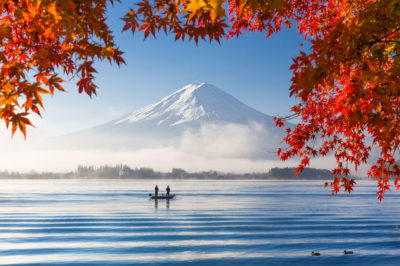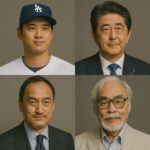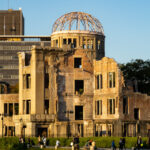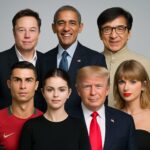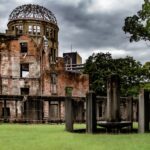Hulk Hogan and Japan
🇯🇵 Hulk Hogan and Japan
A Legendary Bond Beyond the Ring
When most people think of Hulk Hogan, they picture the all-American hero with bulging muscles, a yellow bandana, and the iconic theme song “Real American.” As the face of professional wrestling in the United States during the 1980s and 1990s, Hogan revolutionized the sport’s image and helped bring it into mainstream entertainment. However, what many may not know is that Hulk Hogan had a deep and meaningful connection with Japan, one that significantly shaped his wrestling career and left a lasting impression on Japanese fans.
In this article, we will explore the fascinating relationship between Hulk Hogan and Japan — from his early days in New Japan Pro-Wrestling to his influence on Japanese popular culture.
🌅 Early Days in Japan: New Japan Pro-Wrestling
Before Hulk Hogan became the global superstar of the WWF (now WWE), he was already gaining attention overseas — particularly in Japan. Hogan first wrestled for New Japan Pro-Wrestling (NJPW) in the early 1980s, before his mainstream American fame took off.
🏋️♂️ Learning Japanese Wrestling Style
In Japan, Hogan wasn’t just the muscle-bound showman fans in the U.S. would later come to know. He trained intensively and adopted a more technical wrestling style, incorporating moves like armbars, suplexes, and submission holds. Japanese fans appreciated his physical strength, but also respected his commitment to their style of wrestling, which valued realism and technical prowess over theatrics.
🏆 The Iconic Victory Over Antonio Inoki (1983)
One of the most pivotal moments in Hogan’s Japanese wrestling career came in June 1983, when he faced and defeated Antonio Inoki, the founder of NJPW and a national hero, in the finals of the IWGP League Tournament.
During the match, Hogan delivered his powerful finisher — the Axe Bomber — knocking Inoki out of the ring and rendering him unconscious. The referee counted Inoki out, and Hogan was declared the first-ever IWGP Heavyweight Champion. This moment became legendary, and the footage is still shown in Japanese wrestling retrospectives to this day.
Interestingly, Hogan later claimed in interviews that the IWGP title meant more to him than the WWF Championship, a statement that stunned many American fans but endeared him even more to the Japanese audience.
🤝 Relationship with Antonio Inoki
Hogan’s rivalry with Antonio Inoki was fierce in the ring but respectful outside of it. Over time, they developed a mutual admiration and personal friendship. Inoki reportedly admired Hogan’s professionalism and athleticism, while Hogan praised Inoki’s influence on global wrestling.
Even after Hogan became a household name in the U.S., he maintained this connection with Inoki and NJPW, occasionally returning for special events and exhibition matches.
🇯🇵 Cultural Icon in Japan
By the mid-1980s, Hogan was more than just a wrestler in Japan — he was a pop culture icon.
🎥 Television and Commercial Appearances
Hogan starred in several Japanese TV commercials, promoting everything from energy drinks to action figures. His towering physique and signature catchphrases made him instantly recognizable, even to those who weren’t wrestling fans.
Some of these commercials featured Hogan shouting lines in broken Japanese, which amused audiences and made him appear approachable despite his intimidating presence. These ads helped him connect with families and children, extending his popularity beyond the wrestling ring.
🎤 Music Career
In an unexpected twist, Hogan also released music in Japan. His album “Hulk Hogan and the Wrestling Boot Band” was marketed to Japanese fans, featuring songs that blended rock, rap, and Hogan’s signature bravado. While not a commercial hit, it added another layer to his persona in Japan.
🗾 Frequent Visits and Tours
Throughout the 1980s and 1990s, Hogan made over 30 trips to Japan, performing in major cities like Tokyo, Osaka, and Fukuoka. He was often the main event draw in New Japan’s biggest shows, and his appearances consistently drew large crowds.
He also headlined several Tokyo Dome events, which were seen as the pinnacle of wrestling prestige in Japan. Fans would line up for hours to buy tickets and merchandise, and Hogan often held press conferences and meet-and-greets in Japanese, further demonstrating his respect for the culture.
💬 Fan Reactions and Legacy
Japanese fans viewed Hogan differently than their American counterparts. While in the U.S., he was the flag-waving “Real American” fighting cartoonish villains, in Japan, Hogan was admired for his power, humility, and professionalism.
Older fans still remember his matches with Inoki, Riki Choshu, and Tatsumi Fujinami. Younger generations who didn’t see him wrestle live were introduced to him through YouTube and NJPW documentaries. In this sense, Hogan’s legacy in Japan has remained alive across generations.
🌍 Influence on Global Wrestling
Hogan’s time in Japan didn’t just benefit his career — it also helped bring Japanese wrestling to global attention.
- His cross-cultural appeal opened doors for other foreign wrestlers to work in Japan.
- It showed American promoters that Japanese wrestling had passionate fanbases and a market for international partnerships.
- WWE would later collaborate with Japanese promotions, partially thanks to the groundwork laid by stars like Hogan.
🕊 Hulk Hogan’s Passing and Japan’s Mourning
On July 24, 2025, Hulk Hogan passed away at age 71 due to cardiac arrest at his home in Clearwater, Florida. The news sent shockwaves around the world — and Japan was no exception.
Japanese media outlets such as NHK, Asahi, and Mainichi Shimbun dedicated special segments to commemorate Hogan’s contributions. New Japan Pro-Wrestling released a tribute video, and fans gathered at memorial events across Tokyo to light candles and share memories.
Many Japanese fans posted on social media:
“Hogan wasn’t just an American hero. He was our hero too.”
“The Axe Bomber lives on in our hearts.”
📝 Conclusion: More Than a Foreign Star
Hulk Hogan’s relationship with Japan was far more than a foreign wrestler visiting for a few shows. It was a mutual exchange of respect, admiration, and legacy.
- Japan gave Hogan a platform before he became a global superstar.
- Hogan brought global attention and credibility to Japanese wrestling.
- Japanese fans embraced him as one of their own — not as a visitor, but as part of their wrestling history.
In many ways, Hulk Hogan represents what international sports and entertainment can achieve: building bridges between cultures, inspiring fans across the globe, and leaving behind a legacy that transcends borders.
Rest in peace, Hulk Hogan. Or as Japanese fans might say:
「ありがとう、ホーガン!」
(“Thank you, Hogan!”)
